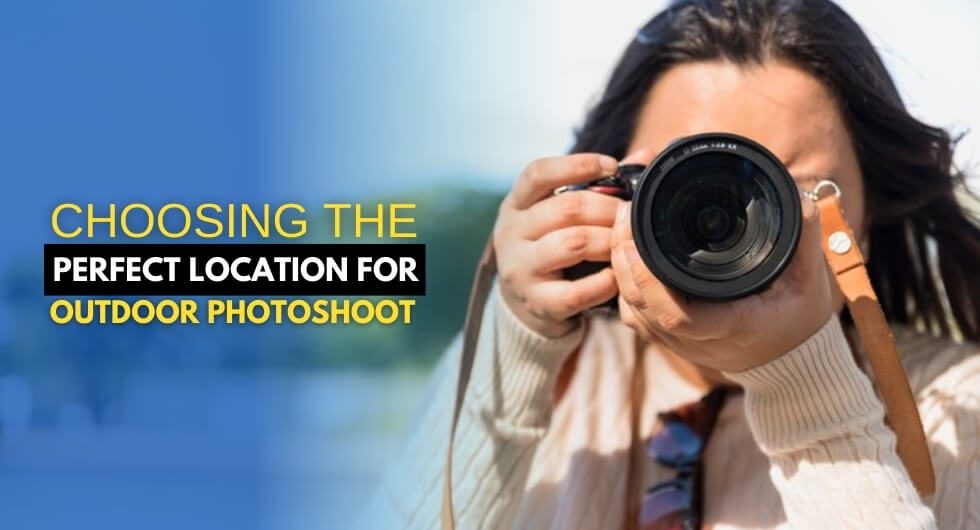Advice on selecting locations that complement your brand or personal style for outdoor sessions. Selecting the right location for your outdoor photoshoot can significantly impact the quality and appeal of your images. At Westend Photography in Werribee, we understand that the backdrop of your photoshoot is crucial in highlighting your personality, brand, or event. Here’s a concise guide to help you choose the ideal location for your outdoor photoshoot.

1. Define Your Vision and Goals
Start by clarifying the goals of your photoshoot. Ask yourself:
- What is the purpose of the shoot? Are you capturing professional headshots, personal branding images, or family portraits?
- What mood or theme do you want to convey? Consider whether you want a relaxed, casual look or a more formal, sophisticated ambiance.
- What message should the photos communicate? The location should enhance and align with the narrative you want to portray.
Understanding these aspects will help you select a location that complements your vision and objectives.
2. Consider the Season and Weather
The season and weather conditions play a vital role in your photoshoot. Different seasons offer unique backdrops:
- Spring and Summer: Ideal for vibrant and lively images with lush greenery and colorful blooms.
- Autumn: Provides a warm, golden light and beautiful fall foliage, perfect for rich, warm tones.
- Winter: Offers a serene, minimalist look with potential snow-covered scenes, ideal for a clean and elegant appearance.
Check the weather forecast and plan accordingly. Overcast days can provide soft, diffused lighting, while sunny days may create harsh shadows. Be prepared with a backup plan for unexpected weather changes.
3. Evaluate the Location’s Aesthetic
Choose a location that fits the style and aesthetic of your shoot:
- Urban Settings: Perfect for a modern and dynamic look with cityscapes, street art, or sleek architecture.
- Natural Landscapes: Parks, beaches, and gardens offer a relaxed and organic feel, providing beautiful natural light and scenic backdrops.
- Historic or Unique Venues: Ideal for adding sophistication or uniqueness, such as historic buildings or museums.
Visit the location in advance to ensure it aligns with your desired aesthetic and vision.
4. Check for Accessibility and Permissions
Ensure the location is accessible and that you have the necessary permissions:
- Public Locations: Parks and public spaces often don’t require special permits but check for any local regulations or restrictions.
- Private Properties: Obtain permission from the owner or manager, and be aware of any permit or fee requirements for commercial photography.
- Accessibility: Consider parking, transportation, and any obstacles that might affect the shoot. Ensure the location is convenient for both you and the photographer.
5. Plan for Lighting and Time of Day
Lighting is crucial for photography, so choose a location that offers favorable lighting conditions:
- Golden Hour: The period shortly after sunrise or before sunset provides soft, warm light, ideal for flattering and beautiful images.
- Midday Sun: Can be harsh but creates dramatic shadows and high contrast, suitable for bold visuals.
- Shaded Areas: Useful if the direct sunlight is too intense, providing soft and even lighting.
Coordinate the timing of your shoot to make the most of natural light.
6. Consider Background and Composition
The location’s background should complement your photos:
- Keep It Simple: Avoid cluttered backgrounds that distract from the subject. Opt for clean, uncluttered backdrops that enhance the focus on you.
- Create Depth: Use elements in the location to add dimension, such as leading lines or natural frames.
- Match Background to Subject: Ensure the background aligns with the subject’s look and the shoot’s overall theme.
7. Prepare for Practical Aspects
Address practical considerations to ensure a smooth photoshoot:
- Check Amenities: Ensure the location has necessary facilities like restrooms or changing areas.
- Weather Preparation: Bring suitable clothing and gear for unexpected weather conditions. Have a backup plan for indoor locations.
- Logistics and Timing: Plan the timing to avoid crowds or disruptions. Arrive early to set up and manage last-minute details.
8. Collaborate with Your Photographer
Work closely with your photographer to select the best location:
- Share Your Vision: Communicate your ideas and preferences to ensure alignment with the photographer’s approach.
- Review Options: Seek your photographer’s input on location choices and their suitability for your shoot.
- Trust Their Expertise: Experienced photographers can adapt to various locations and lighting conditions to achieve the best results.
9. Make the Most of the Location
Maximize the potential of your chosen location:
- Explore Angles: Experiment with different angles and perspectives to capture the location’s best features.
- Use Natural Elements: Incorporate elements like flora or architectural details to enhance the visual interest.
- Engage with the Environment: Interact with the setting to create dynamic and engaging images.
10. Enjoy the Experience
Finally, enjoy the process of creating memorable images. Embrace the experience, have fun, and let your personality and creativity shine through. The right location can elevate your photos and create lasting memories.
Choosing the perfect location for your outdoor photoshoot involves thoughtful consideration and planning. By defining your vision, evaluating practical aspects, and collaborating with your photographer, you can select a location that enhances your images and reflects your unique narrative. At Westend Photography in Werribee, we’re here to guide you through every step, ensuring your outdoor photoshoot is a success and your images are exceptional.
